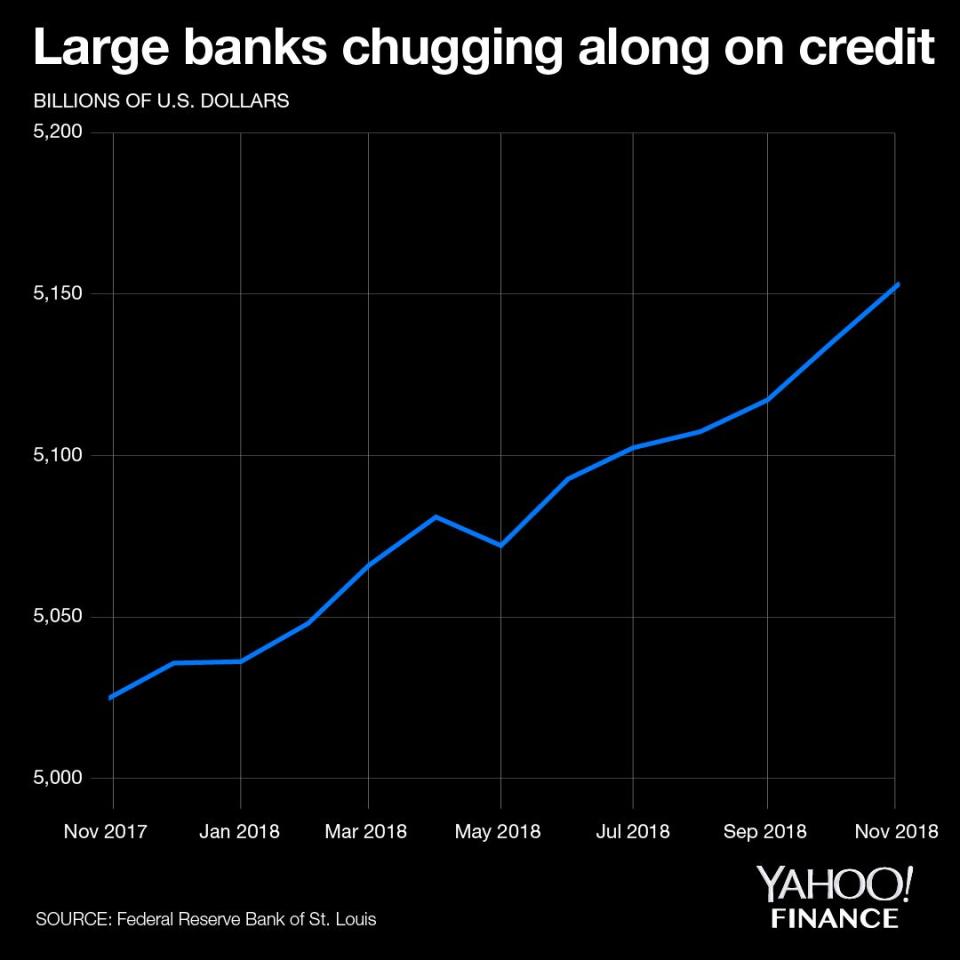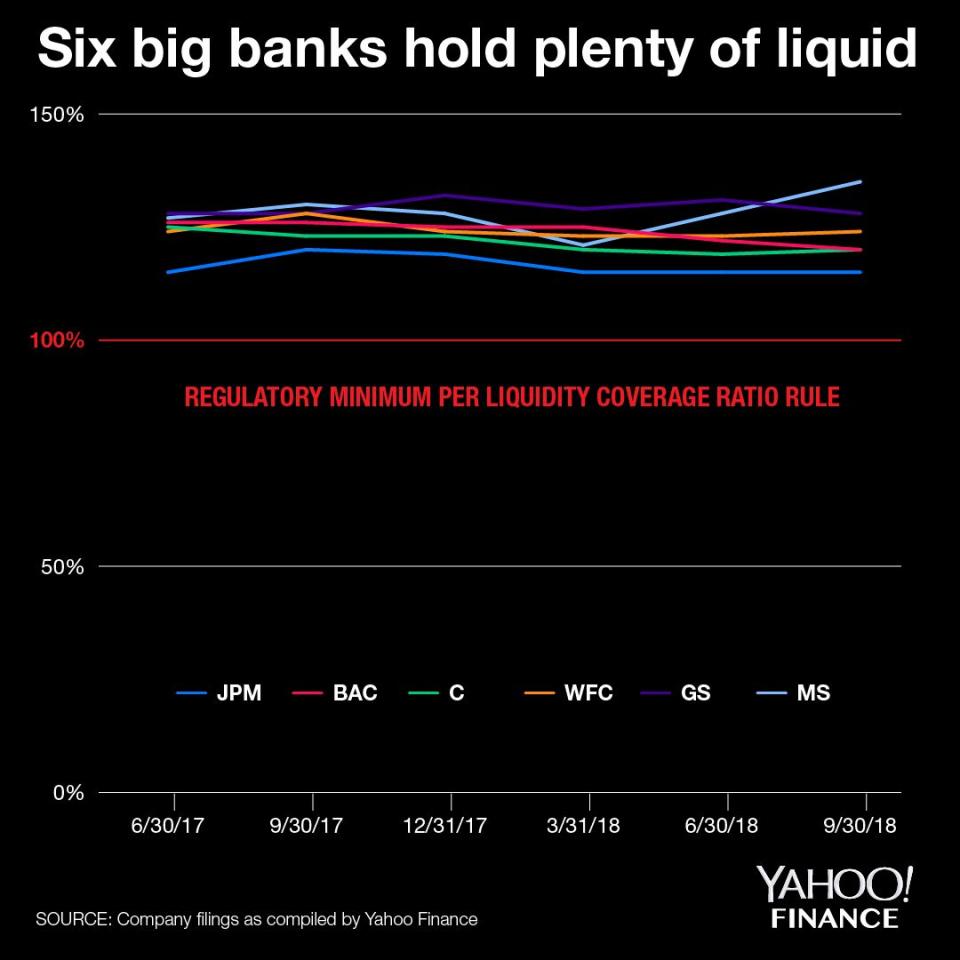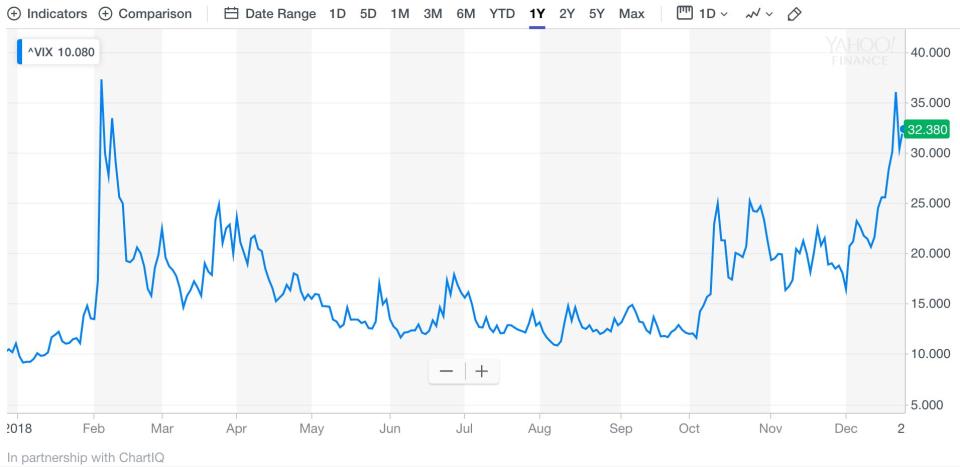Banks wave off Mnuchin's concerns over liquidity

Investors were left scratching their heads over the Treasury Department’s statement earlier this week reassuring the public that banks have “ample liquidity.” But what kind of liquidity was the Treasury talking about?
On Monday, markets sold off after the U.S. Treasury issued a surprise weekend statement noting that Secretary Steven Mnuchin had called six CEOs at the largest banks. The statement noted that banks have plenty of liquidity “available for lending,” adding that the bank CEOs also confirmed that markets are not suffering from “any clearance or margin issues.”
Secretary Mnuchin convened individual calls with the CEOs of the nation's six largest banks. See attached statement. pic.twitter.com/IEb2kv6dx9
— Treasury Department (@USTreasury) December 23, 2018
The Treasury Department was referring to two different types of liquidity; access to credit speaks to bank liquidity while clearance relates to market liquidity.
Analysts say there is no fire to put out in either sense of the word “liquidity.”
“This surprised the market as many didn’t think of this as a concern,” Bank of America wrote in a note Dec. 26. “And in our opinion, it isn’t.”
Bank analysts say banks are plenty liquid — mostly due to post-crisis regulations. They also say markets are liquid, but decreasingly so — also due to post-crisis regulations.
“Available for lending”
The Treasury Department statement said the six banks — Bank of America (BAC), Citigroup (C), Goldman Sachs (GS), JPMorgan Chase (JPM), Morgan Stanley (MS) and Wells Fargo (WFC) — reported having plenty of liquidity “available for lending to consumer, business markets, and all other market operations.”
This implies concerns over banks having enough capacity to lend to people and businesses.
The Fed’s October survey of senior loan officers only revealed weakness in certain pockets of the credit market. While lenders eased standards on commercial and industrial loans amid weaker demand, loan officers told the Fed they saw no deterioration in the supply and demand for consumers taking out auto loans and credit cards.

Fed data on bank credit showed solid growth among all loan categories. Among large U.S. banks, the pipeline for consumer, commercial, and real estate loans have maintained their pace over the last year with the exception of a brief slump in the spring.
Gerard Cassidy, a Wall Street analyst for RBC Capital, told Yahoo Finance that he found the Treasury statement “unusual,” adding that loan pipelines are very healthy. One way to measure bank capacity for lending is by looking at banks’ loan-to-deposit ratios, a measure of the credit a bank extends against the amount of funding it has on hand.
Cassidy said loan-to-deposit ratios are currently around the high 70s, well below the 90% levels that used to be industry standard.
“The banking system is wide open and as long as you meet their underwriting criteria,” Cassidy said.

Banks appear to be funded with plenty of liquid assets, in part due to new regulatory requirements. Since 2017, banks have been required to hold enough liquid (easily convertible to cash) assets on hand to cover a theoretical 30-day period of net cash outflows. The six large banks that talked with Mnuchin currently have a “liquidity coverage ratio” of 121%, well above the 100% minimum.
“Liquidity for...clearance or margin”
Liquidity in markets is a completely different question.
By asking about clearance or margin issues, the Treasury was likely trying to get commentary on recent volatility. As market makers, banks have a good read on whether or not there are enough buyers and sellers to clear trades — whether that’s a stock or an options contract or a fixed income asset. The more counter-parties there are, the more liquid a given market it and the less volatile it is likely to be.
Stocks have been on a roller coaster as of late.
“U.S. equity market is the most liquid in the world. Yet we’re seeing volatility of unbelievable magnitude,” Marty Mosby, director of bank and equity strategy at Vining Sparks, told Yahoo Finance.
Mosby said a post-crisis rule known as the Volcker Rule is partly to blame. The rule, which carries the name of former Fed Chair Paul Volcker, prohibits banks from engaging in proprietary trading that benefits their own books instead of their clients and customers. If large banks reduce their trading activity, it could pull liquidity from some markets and lead to greater disparities in price discovery.

Mnuchin has been on record as blaming the Volcker Rule for the recent volatility.
Cassidy said he’s seen a liquid crunch in fixed income markets, pointing to high yield markets that haven’t seen much issuance as of late.
But banks told Mnuchin that market liquidity at large is still relatively healthy.
So in both senses of the word “liquidity,” the banks appear to have waved off concerns.
“The fear factor built into everyone’s DNA because of 2008 is still a very prominent urge and devotion that drives these markets,” Mosby said.
Brian Cheung is a reporter covering the banking industry and the intersection of finance and policy for Yahoo Finance. You can follow him on Twitter @bcheungz.
Read more:
House Republican to regulators: Ease Volcker rule on large banks
NY Fed's Williams hints at flexibility with balance sheet unwind
Fears of looming recession cast light on Fed balance sheet
Why 2019 could be the year of the big bank merger
Congress may have accidentally freed nearly all banks from the Volcker Rule
